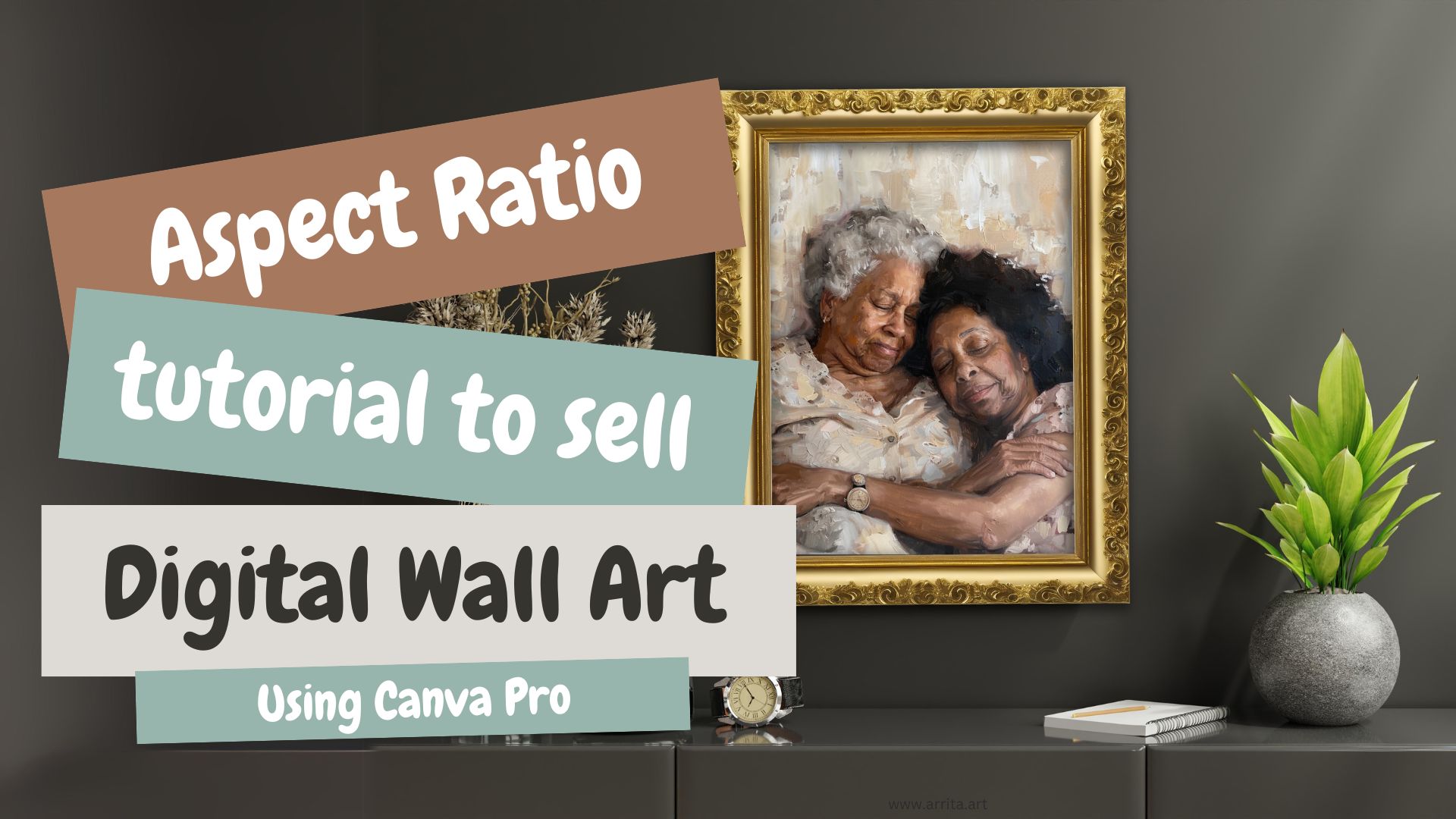Creating digital wall art is an increasingly popular endeavor for artists, designers, and entrepreneurs looking to sell their work online. One of the critical aspects of preparing your art for sale is ensuring that it looks great in any format, including when framed. Canva Pro offers a suite of tools that can help with this, especially with aspect ratio formatting and frame selection. Here’s a comprehensive guide on how to use Canva Pro to format your digital wall art for optimal sales.
Step 1: Understanding Aspect Ratios
Download Aspect Ratio Guide
Tutorial:
Before diving into formatting, it’s essential to understand aspect ratios. The aspect ratio is the proportional relationship between the width and height of an image. Popular aspect ratios for digital wall art include:
- Square (1:1): Ideal for portraits and social media posts.
- Standard (4:3 or 3:4): Works well for most traditional artwork.
- Panoramic (16:9 or 9:16): Perfect for landscapes or cityscapes.
Choosing the right aspect ratio depends on your artwork’s subject and the intended display setting. Consider what frames are commonly available for your target market, as this might influence which aspect ratios are best.
Step 2: Setting Up Your Canva Project
Once you’ve decided on the aspect ratio, the next step is to set up your project in Canva Pro:
- Create a New Design: Log into your Canva Pro account and click on ‘Create a Design’. You can start with a custom size or choose a template that matches your desired aspect ratio.
- Upload Your Artwork: Drag and drop your artwork into the Canva workspace. If you’re creating new art directly in Canva, utilize the vast range of tools and elements available.
Step 3: Formatting with Frames
Canva Pro offers an array of frames that can accentuate your artwork. Frames not only enhance the appearance but also help buyers envision how the art might look in their space. Here’s how to add frames:
- Select ‘Elements’ from the Sidebar: Search for ‘Frames’ in the search bar.
- Choose a Frame: Browse through different styles and select one that complements your artwork.
- Adjust the Frame: Resize and move the frame to fit your art perfectly. You can also customize the color and thickness of the frame to match your design.
Step 4: Preview and Adjust
After framing your artwork, preview how it looks in different simulated environments (like a living room or gallery wall) if available in Canva Pro. This step is crucial as it allows you to make any necessary adjustments to ensure the art fits well within typical home decor settings.
Step 5: Export and Publish
Once satisfied with the formatting and framing:
- Export Your Design: Click on ‘Share’ and then ‘Download’. Choose a high-quality format such as PNG or JPG. Ensure your settings are optimized for print quality, especially if you’re selling physical prints.
- Publish: Upload your finished artwork to your online store or art platform. Make sure to include various images showing how the artwork looks with different frame styles and in different settings.
Final Thoughts
Proper presentation of your digital wall art can significantly affect its marketability. By carefully selecting aspect ratios and frames, and using Canva Pro’s tools to their full extent, you can enhance the appeal of your artwork and increase your chances of sales. Remember, the goal is to make it easy for customers to visualize the art in their own space, so take the time to ensure every piece looks its best.
By following these steps, you’re well on your way to creating beautifully formatted and framed digital wall art that is ready to catch the eyes of potential buyers!
#DigitalArt #CanvaProTips #WallArt #ArtistsOnInstagram #HomeDecor #ArtForSale #PrintArt #ArtFraming #AspectRatio
Discover more from Arrita Robinson, Visual Artist
Subscribe to get the latest posts sent to your email.


